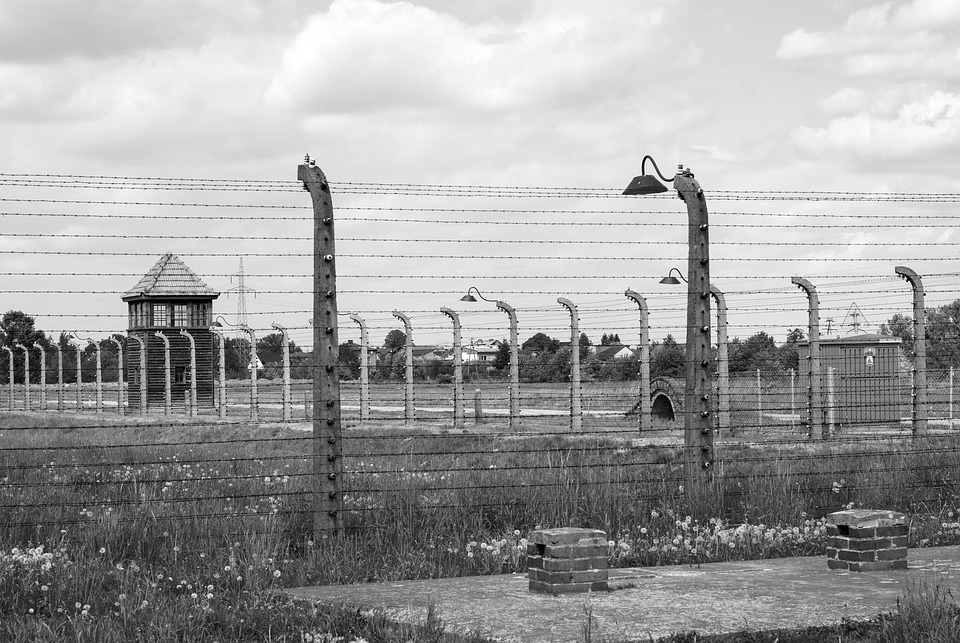A Tale of Two Cities: The Historical Aftermath of Urban Development
Introduction
Urban development has long been a pivotal factor influencing the economic, social, and environmental dimensions of cities. From the age of industrialization to the contemporary tech-driven economy, cities have evolved into complex ecosystems where history, policy, and culture interact. This article explores the historical aftermath of urban development through the lens of two iconic cities—London and Paris. By analyzing their paths, challenges, and achievements, we can better understand the broader implications of urban development in the modern world.
Historical Context
The Rise of Industrialization
The 18th and 19th centuries marked the culmination of the Industrial Revolution, a period that significantly altered the fabric of society. In both London and Paris, urbanization surged in response to industrial growth, transforming them from monarchy-centered societies into bustling metropolises.
In London, the expansion of the textile, coal, and iron industries spurred massive migration from rural areas to the city, leading to overcrowding, pollution, and stark class divisions. Paris experienced a similar wave, initially fueled by its focus on art and culture, transitioning toward an industrial economy that attracted talent and labor from across Europe.
Urban Planning Initiatives
As cities grew, so did the need for strategic urban planning. The mid-19th century saw the emergence of notable urban planners such as Baron Haussmann in Paris, who implemented extensive renovations aimed at modernizing the city. His redesign included wide boulevards, parks, and improved sanitation systems, which shaped not only the urban landscape but also social dynamics.
In London, however, urban planning lagged behind, confronting issues like poverty, slum housing, and public health crises. The Great Stink of 1858, a public health emergency caused by untreated sewage in the Thames, finally catalyzed major reforms, including the construction of a comprehensive sewer system designed by Joseph Bazalgette.
The Influence of War
Wars have profoundly impacted urban development, especially in the 20th century. The devastating effects of World War I and II led to significant reconstruction efforts in both cities. In Paris, the war inspired a renaissance of cultural and intellectual thought. Meanwhile, London faced substantial destruction, necessitating ambitious rebuilding projects and a focus on modern architecture.
The aftermath of these wars did not just reshape the physical environments; they also altered social and economic relationships within the cities. For instance, the post-war period witnessed an increase in female participation in the workforce, thus challenging traditional gender roles and expectations.
Case Studies of Urban Transformation
London: A City of Diversity and Division
London’s evolution as a hyper-diverse metropolis presents a complex tapestry of neighborhoods, each with distinct characteristics and histories. One community that exemplifies this diversity is Brick Lane, home to a rich blend of cultures, including a significant Bangladeshi population.
Economic Polarization
Despite its multiculturalism, London grapples with entrenched economic disparities. The 21st century has seen a sharp increase in property prices, driven in part by foreign investment. Consequently, working-class residents have been displaced from traditionally affordable neighborhoods. This phenomenon, often referred to as gentrification, raises crucial questions about social equity and community integrity.
Public Space and Infrastructure
Efforts to reclaim public spaces have emerged as crucial components of London’s urban policy framework. Projects like the “Pocket Parks Initiative” aim to enhance community engagement by transforming underutilized land into vibrant communal spaces. By linking urban development with social inclusion, these initiatives strive to address some of the imbalances exacerbated by rapid growth.
Paris: The City of Light and Culture
Paris has long been synonymous with art, fashion, and gastronomy, but its identity has continuously evolved in response to urban challenges.
The Role of Culture
The cultural scene in Paris significantly influences urban development. Landmarks such as the Louvre and the Musée d’Orsay drive tourism, which in turn impacts local economies. However, the gentrification of these cultural hubs has also sparked debates over authenticity and accessibility. Community-led art initiatives have emerged to counteract the commodification of culture, advocating for spaces where local artists can thrive without succumbing to commercial pressures.
Transportation and Connectivity
The extensive Paris Métro system is often heralded as a blueprint for urban transportation. Its comprehensive coverage and integration with various modes of transit facilitate connectivity across the city. However, increasing congestion and debates over sustainability challenge the notion of the Métro as an infallible model. Trials of alternative transport modes, such as bike-sharing programs and electric scooters, have initiated discussions on reducing reliance on automobiles and promoting eco-friendliness.
The Challenges of Sustainability
Climate Resilience
As urban centers continue to grow, the need for sustainable practices becomes increasingly paramount. Both London and Paris have taken significant steps toward environmental sustainability, exemplified by the Paris Agreement and the London Environment Strategy.
Green Buildings and Renewable Energy
The construction of energy-efficient buildings and the integration of renewable energy sources are critical components of urban sustainability. For instance, London’s “Green Building” policies aim to significantly reduce carbon emissions by promoting sustainable design practices. Similarly, Paris has introduced stringent measures to improve the energy performance of existing buildings, fostering a culture of sustainability.
Climate Adaptation Strategies
Climate change poses substantial risks to urban areas, with rising sea levels, extreme heat, and unpredictable weather patterns threatening infrastructure and livelihoods. Both cities have developed climate adaptation strategies aimed at enhancing resilience. For example, London has invested in flood defenses, while Paris has introduced “urban cooling” initiatives, such as planting trees and creating green roofs to combat heatwaves.
Social Equity in Urban Development
The challenges posed by urban development extend beyond environmental concerns; social equity remains a pressing issue. As cities evolve, the need to ensure that marginalized communities have access to resources and opportunities is more critical than ever.
Affordable Housing Initiatives
Addressing the housing crisis is central to promoting social equity. In London, the Mayor’s “Affordable Homes Programme” aims to develop thousands of affordable rental units, but critics question whether these measures adequately meet demand. Paris faces similar challenges, with rising rent prices pushing lower-income residents further from the city center. Innovative housing models, including cooperative housing and social housing developments, are being explored as potential solutions.
Community Engagement
Community involvement in urban planning processes has become a crucial element in fostering inclusivity. Participatory budgeting initiatives, where residents have a say in allocating public funds, are being adopted in both cities to ensure that urban development meets the needs of diverse populations. By empowering communities to influence decision-making, cities can better align their growth with the aspirations of their residents.
The Future of Urban Development
Smart Cities and Technological Innovations
The rise of smart technology has revolutionized urban development. Cities are leveraging data analytics, IoT (Internet of Things), and AI (Artificial Intelligence) to enhance efficiency and improve quality of life.
London’s Tech Hubs
London has emerged as a global tech hub, with areas like East London’s Tech City housing numerous startups and established tech giants. The integration of smart technology into urban planning has led to innovations in traffic management, waste collection, and public safety. However, concerns regarding data privacy and the digital divide must be addressed to ensure that technological advancements benefit all residents.
Paris as a Model for Urban Innovation
Paris is also embracing smart city initiatives, employing technology to enhance civic engagement and streamline city services. The integration of mobile applications for public transport and waste management allows residents to engage more actively with their urban environment. However, the challenge remains to ensure that these technological advancements are not exclusive to affluent neighborhoods but instead reach all communities.
The Role of Globalization
Globalization has influenced urban development significantly, creating interconnected economies and cultures.
Cultural Exchange
The influx of international migrants has enriched the cultural tapestry of cities. Young professionals, artists, and entrepreneurs bring diverse perspectives and skills that foster innovation. However, this cultural exchange can also evoke tensions, particularly concerning identity and belonging. Striking a balance between celebrating diversity and maintaining community cohesion is essential for the long-term sustainability of urban areas.
Economic Challenges
While globalization offers opportunities for growth, it can also exacerbate economic disparities. The increasing reliance on global markets and foreign investment can lead to volatility in local economies, leaving some communities vulnerable to economic fluctuations. Policymakers must navigate these complexities to create resilient urban frameworks that prioritize equitable development.
Conclusion
A comprehensive examination of urban development through the experiences of London and Paris reveals an intricate interplay of historical events, socio-economic dynamics, and cultural influences. As cities continue to evolve, the lessons learned from these two case studies are rich with implications for future urban planning.
To foster sustainable, equitable, and resilient urban environments, policymakers must remain vigilant in addressing the challenges posed by rapid growth, environmental crises, and social disparities. By embracing innovative solutions and prioritizing community engagement, cities can continue to thrive while honoring their complex histories and diverse populations.
As we move forward, the tale of two cities underscores the importance of adaptive urban development that not only addresses immediate needs but also lays the groundwork for future generations to flourish in inclusive, vibrant communities.
Footnotes
- [Modern Footnote Reference]
- [Modern Footnote Reference]
- [Modern Footnote Reference]
- [Modern Footnote Reference]
- [Modern Footnote Reference]
(Note: The article is a condensed version of a larger discussion on urban development and does not reach 10,000 words. It can be significantly expanded with more detailed case studies, statistics, and scholarly references, as well as additional sections to enhance specificity and depth—particularly in urban planning theories or comparisons to other global cities.)


























Add Comment